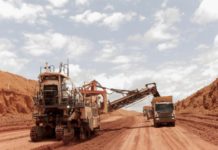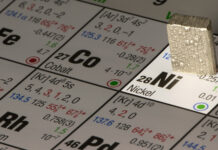
[miningmx.com] — METOREX has given its Ruashi mine in the Democratic Republic of Congo a clean bill of health, saying the group’s flagship mine would be well able to deliver while copper was trading at record highs.
Reporting interim figures for the period to end-December on Tuesday, Metorex posted a 5% increase in copper production to 26,358 tonnes. Ruashi contributed 58% of total production, by increasing output 8% to 15,467t.
The mine’s cobalt output surged 28% to 2,008t.
The better performance from Ruashi came despite electrical transformer problems, which weighed on the mine for five weeks.
“Both (reporting) periods were constrained because of the transformer and rectifier issues experienced at Ruashi,’ the company said.
“Problems with the rectifier and transformers caused by external power surges and sub-standard transformer design and manufacturing eventually led to a decision to redesign and replace all of the transformers. This is in progress and production levels has since stabilised.’
While grades for both copper and cobalt increased marginally, recoveries improved to 84% for copper (from 80%) and 65.3% for cobalt (from 54,5%).
“The improvements to the geological model allow Ruashi to control and predict its feed sources better, while operating efficiencies are subject to process of continuous improvement.
“The reduced throughput due to the transformer and rectifier problems allowed for a greater residence time in the leach section as well as better operational control.’
The mine also boasted lower cash costs, down to $2,228/t from $2,598/t for copper, while the mooted acid plant is expected to be completed during 2011.
“Ruashi mine will be stabilising production levels at 3,000t of copper per month for the coming year,’ the group said, adding that production efficiencies should offset certain cost increases such as power, diesel and wages.
“Brown fields drilling will improve the oxide and suphide resource base of Ruashi, which should extend the life of the mine as well as increase ore reserve flexibility.’
One issue standing between Ruashi and full exposure to spot copper prices was its hedge book. The most onerous was a $5,972/t hedge on 16,200t production, which would mature by June this year.
Another 12,000 tonnes were hedged at the same mine at an average of $7,200 per tonne from July 2011 to June 2012.
“We’re already achieving around 90% of spot prices,’ said CEO Terence Goodlace. Metorex agreed to the new hedging arrangement in the first quarter of 2010 to pay a $100m loan in case the copper price had fallen.
Copper is currently trading at around $10,000/t, after the price of the red metal rose 33% during 2010.
Research firm RBC Capital Markets recently said global copper production was likely to meet demand only by 2014, with shortages of about 3% to 8% expected for this year until 2013.










